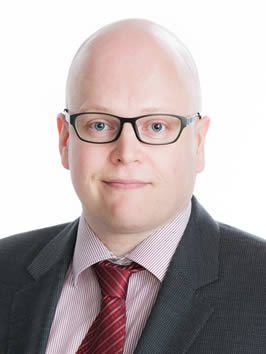09/06/2022
Fast developing 3D printing is one solution to component shortage
3D printing as technology is young and relatively unknown, which is why it isn’t yet fully utilized. The method is, however, developing at a fast pace and should not be ignored, even in the light of component shortage. The biggest challenge we see is that the potential of the method is not yet sufficiently understood. At its best, 3D printing can reform your entire business, when you can print products and spare parts fast and near the user.
Mass production of 3D prints is already an everyday thing. However, the technology is hampered by the lack of standardization and different manufacturing process compared to traditional manufacturing methods. The biggest challenge for the widespread usage of 3D printing is that people don’t quite understand what kind of possibilities the manufacturing method can offer.
When you can print objects easily and take the product lifecycle into account from the design stage, your entire business will revolutionize – All of a sudden, you can manufacture locally the parts that used to be transported from further away. Additionally, the maintenance and delivery of spare parts becomes faster, and they can even be carried out on site. And this will naturally affect your whole business logic.
3D printing makes objects lighter and brings savings
One of the great things about 3D printing is that it gives you the freedom to determine the exact location of the material used. This saves material compared to machining or casting, as you can optimize the 3D printable parts to best suit the application. The method also makes it possible to combine multiple parts into a single object. This reduces the need for assembly and the number of items.
The more you simulate the object and understand the potential of the manufacturing process, the more you reduce material consumption and the more cost-effective manufacturing becomes. The key is to make use of the possibilities that 3D printing can provide you in designing.
Best of all, when the object becomes lighter, it usually brings savings to your customer as well. For example, the lighter you can make the boom of a forestry machine, the less energy it takes to move it. Alternatively, they can use this saved energy to increase capacity. It is also easier to control the movements of a lightweight structure.
Towards more energy efficient solutions
3D printing also allows the optimization of objects that have internal flow systems. This is very useful, for example, in designing cooling and heating, when you can optimize heat transfer by using Computational Fluid Dynamics (CFD).
Additionally, you can manufacture even more challenging objects. For example, you can create holes and channels inside an object that cannot be made by drilling or casting. By first defining the interfaces, the required materials, and their mechanical properties, you can then print the optimized object.
Batch production of 3D printing is also suitable for small parts, which can be produced in dozens or even hundreds in a single run. However, the object must always be designed for printing, the same way you design an object to be casted.
Even large objects can be printed
In Finland, a project called DREAMS, led by DIMECC, was launched this spring. Its object is to create an open material database for 3D metal printing. The database will make up for the lack of industry standards and facilitate the use of 3D printing for the most demanding applications. The DREAMS project is financed by Business Finland and it is part of the FAME ecosystem.
The project involves a large number of Finnish research institutes and companies. Elomatic is also participating in the development of WAAM printing (Wire and Arc Additive Manufacturing). In WAAM printing, a robot welds structures layer by layer. This way it is possible to print even large metal objects, and the size is not a restraint unlike when printing with an AM machine. The method can even be used to manufacture rocket fuel tanks!
3D printing methods can bring relief, especially in times of crisis when importing parts becomes a bottleneck: when it is enough that information is moving, objects can be quickly sub-manufactured domestically. Another advantage of WAAM printing is that the material used is welding wire, which is easier to import to Finland than, for example, steel sheets.
Want to know how to multiply the benefits of 3D printing? Learn how 3D scanning supports 3D printing »
Want to know more? Check out these related articles:
Additive Manufacturing
Our AM structure engineering can help you save mass, energy and costs in machinery and equipment.
Additive Manufacturing (AM) allows the engineering of structures and parts optimized for structural integrity and fluid dynamics. By engineering optimized structures, we can help you save on material and energy and often even in manufacturing costs. We have studied especially the engineering and optimization of large (>1 m) structures using AM technologies.
Component scanning
In component scanning, we use an agile portable laser scanner, which can reach an accuracy of up to 0.1 mm.
In part scanning, the size of the scanned objects can range from a matchbox to a passenger car. Our scanner will travel to the destination with the equipment. You can also easily provide movable parts to our office for scanning.


